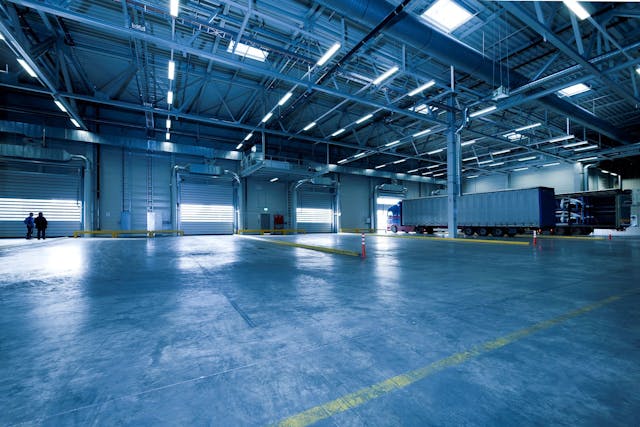Warehouse flooring is a critical component of any industrial operation, influencing the efficiency, safety, and longevity of the facility. The right flooring can support heavy loads, withstand constant traffic, and provide a safe working environment for employees. This guide explores the various types of warehouse flooring, their benefits, and the key factors to consider when selecting the best option for your warehouse.
Importance of Warehouse Flooring
Industrial flooring UK endure a significant amount of stress from heavy machinery, forklifts, pallet jacks, and foot traffic. The flooring must be durable, easy to maintain, and safe to prevent accidents and ensure smooth operations. Proper flooring can also contribute to the overall aesthetics of the warehouse, enhancing the working environment and even potentially boosting worker morale.
Types of Warehouse Flooring
1. Concrete Flooring
Benefits:
Concrete is one of the most common and durable flooring options for warehouses. It can handle heavy loads and high traffic without significant wear. Concrete floors can be treated with sealants to make them resistant to chemicals, stains, and moisture.
Applications:
Ideal for general warehousing, heavy machinery, and areas with high traffic.
2. Epoxy Flooring
Benefits:
Epoxy coatings are applied over concrete floors to create a smooth, durable, and high-performance surface. Epoxy floors are resistant to chemical spills, abrasion, and impact, making them suitable for industrial environments. They are also easy to clean and maintain.
Applications:
Suitable for warehouses dealing with chemicals, food processing, and pharmaceuticals.
3. Polished Concrete
Benefits:
Polished concrete is treated with a chemical densifier and ground with progressively finer grinding tools. This results in a shiny, reflective surface that is not only attractive but also incredibly durable and easy to clean. Polished concrete floors are resistant to staining and abrasion.
Applications:
Ideal for warehouses where aesthetics are important, such as showrooms or retail storage areas.
4. Vinyl Composition Tile (VCT)
Benefits:
VCT is a cost-effective flooring option that offers moderate durability and ease of maintenance. It comes in various colours and patterns, allowing for customisation of the warehouse floor.
Applications:
Suitable for light industrial areas, offices within warehouses, and areas with moderate traffic.
5. Rubber Flooring
Benefits:
Rubber flooring is known for its shock absorption, slip resistance, and comfort underfoot. It is also resistant to chemicals and easy to clean. Rubber flooring can help reduce noise and vibration from machinery and foot traffic.
Applications:
Ideal for areas where employees stand for long periods, such as packing stations or workshops.
6. Anti-Static Flooring
Benefits:
Anti-static flooring is designed to dissipate static electricity, making it essential in environments where static discharge can damage sensitive equipment or pose a safety hazard.
Applications:
Suitable for warehouses storing electronics, flammable materials, or other sensitive equipment.
Factors to Consider When Choosing Warehouse Flooring
1. Load-Bearing Capacity
Assess the weight of the machinery, equipment, and stored goods to ensure the flooring can withstand these loads without cracking or deteriorating.
2. Traffic Type and Frequency
Consider the amount and type of traffic the floor will endure. High traffic areas may require more durable and abrasion-resistant flooring.
3. Environmental Conditions
Take into account factors such as temperature fluctuations, humidity, and exposure to chemicals. Some flooring materials are more resistant to these conditions than others.
4. Safety Requirements
Ensure the flooring meets safety standards, including slip resistance, to prevent workplace accidents and injuries.
5. Maintenance and Durability
Choose a flooring option that is easy to clean and maintain, and that offers a long lifespan to reduce downtime and replacement costs.
6. Aesthetic Considerations
While functionality is paramount, the appearance of the flooring can also impact the overall look of the warehouse. Choose a flooring option that aligns with the desired aesthetic of the facility.
Installation and Maintenance Tips
1. Professional Installation
Hiring professional installers ensures that the flooring is laid correctly, maximising its durability and performance. Proper installation is crucial for preventing issues such as uneven surfaces or premature wear.
2. Regular Maintenance
Implement a regular maintenance schedule to keep the flooring in optimal condition. This includes routine cleaning, inspections, and addressing any damage promptly.
3. Use of Protective Measures
Employ protective measures such as mats or coatings in high-traffic areas to extend the lifespan of the flooring. Additionally, using proper footwear and machinery with non-marking tires can help reduce wear.
Conclusion
Choosing the right warehouse flooring is a vital decision that can impact the efficiency, safety, and aesthetics of your facility. By understanding the different types of flooring available and considering factors such as load-bearing capacity, traffic, and environmental conditions, you can select the best option for your warehouse needs. Proper installation and regular maintenance will ensure that your flooring remains durable and effective, supporting your operations for years to come.

